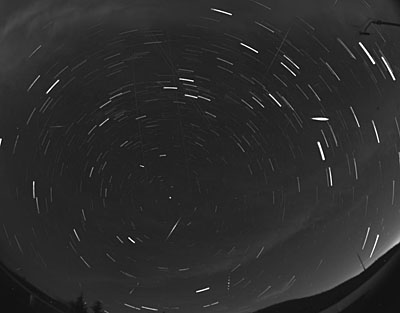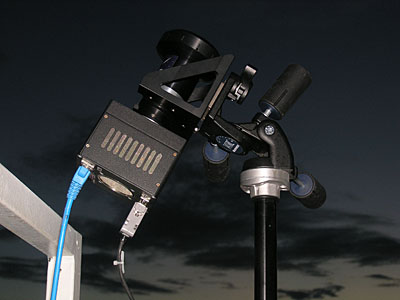The group of researchers of the European Space Agency for the study of meteors made measurements and observations at several points in order to determine the trajectory of the particles before their meeting with the Earth, to study the physical possibilities by recording the light produced from the dust, and to test the performance of a new panoramic camera

This year's Perseid shower did not disappoint and provided a heavenly spectacle to many enthusiastic viewers around the world. Comet Swift Tuttle entered Earth's orbit around the Sun and scattered a long trail of dust. When the Earth passed this point in its orbit, which happens every year in the month of August, a spectacular shower of meteors was seen. The last time Comet Swift Tuttle scattered its dust on Earth was in 1992, but these clouds of dust are enough to sustain many showers, even decades after they were ejected from the comet's tail.

The new SPOSH camera
The group of researchers of the European Space Agency for the study of meteors carried out measurements and observations at several different points and with the cooperation of several research centers in Germany and Austria. The research had three main goals: to determine the trajectory of the particles before their meeting with the Earth, to study the physical possibilities by recording the light emitted from the dust, and to test the performance of a new panoramic camera, (Smart Panoramic Optical Sensor Head (SPOSH)), a sensitive device high, was built for future photography missions on the night side of the planets, but it is also used for meteor observations.
The test that began with the Perseid shower showed that the camera, which contains in one image the entire area of the night sky, worked perfectly and flawlessly. The image above is a wonderful result of the camera test. Another use of the camera proved how it splits the colors of the spectrum of the light coming from the meteor, and thus it is possible to determine the chemical components of the dust particles.
About 30 meteors were recorded by the camera for about four consecutive hours. From a combination of all the data obtained, it is now possible to draw conclusions about the structure of the comet's materials. Thanks to the three-way coordination between the various locations in Austria and Germany, it was possible to track a single dust particle at the moment of its meeting with the earth's atmosphere, and its orbit around the sun (before it reaches the earth).
The orbit of the meteor is similar to the orbit of the comet, but still the orbit is not exactly the same. Any small change can be caused by a gravitational effect that comes from one of the planets or the sun. Understanding the difference will shed light on the processes of the dust particles in the solar system, and also their eruption from the comet.
The next meteor event is expected to happen on the morning of the 3rd of September 2007. It will be a once in a lifetime event. A comet that passes once every thousand years leaves behind clumps of dust and stones that turn into a meteorite shower only once every seventy years. The meteor will be visible in the constellation Origa, but the observation is expected to be possible from North America, Mexico and Hawaii.
Translated: Yariv Zerbiv
Source: European Space Agency

2 תגובות
The lines that move contrary to the circle that the stars outline are the meteorites, and you are welcome to contact the source. There is a link to it. This is not a news agency (I have no rights) but the European Space Agency.
The picture you posted in which you "see" stars moving in a circle is not a picture of meteors or other bodies penetrating the atmosphere. The photographer aimed his camera at the North Star and left the camera shutter open for a long time (about an hour) and this is how the parts of the circle were obtained.
This was also done in a previous meteorite shower by Maariv and the fake photo was by E.P.